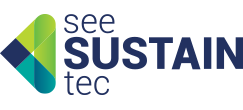Figures speak for themselves. In the last 20 years alone, the world has consumed more plastic than the entire 20th century. Today, the conventional plastics industry is a USD500 billion industry. The fastest growing segments, which represent almost half of the market, are disposable plastics (plastic food and beverage packaging – bottles, lids, cups, utensils, and snack bags). Medical products, agriculture, constructions and transportation are other major contributors.
These are also the segments that contribute most heavily to economic damages associated with plastic pollution: eco-system degradation, trash and waste management, and public health. These segments are exposed to consumer scrutiny and growing concern, litigation and bans, and potential loss of revenue associated with having a negative brand image. Lego, McDonalds, Dunkin Donuts and other global companies have recently announced to be moving away from disposable plastics. This is to demonstrate their growing concern and interest in finding alternatives. Yet, for the most part, these alternatives are not readily available.
How do you address this issue?
Think Beyond Plastic is directing disruptive innovation to key problem areas, or ‘hot spots’, of plastic pollution where consumption is the highest and market failures are the greatest: disposable plastic products and packaging, plastic medical waste and microbeads (with market focus on food services), food and other types of packaging, retail, personal care products, construction, transportation and agricultural plastic. The innovation will result in high-value investment opportunities in:
-
New materials that are non-toxic, truly compostable, fully biodegradable alternatives to conventional plastics, with comparable economic properties and performance characteristics.
-
New manufacturing process that can handle high-volume production for these new materials.
-
New recycling processes that can handle mixed recycling streams including compostables, bioplastics, bagasse and other emerging materials.
-
New consumer product design that conforms to the principles of ‘circular economy’ and reduces dependence on conventional plastic.
Can you succeed in this effort?
The odds are in our favour. Conventional plastic manufacturers are looking into renewable and bioplastic materials, but they are slow to move. They protect the status quo, and so for the last years this industry has not changed at all. Disruptive innovation comes from those who challenge the status quo, from the risk-takers, and from those with flexibility to experiment with new technologies. We are bringing this innovation out of the labs and into high-scale production facilities so it becomes price-performance competitive to conventional plastics. Our goal is to remove barriers to entry, which is significant in this market.
How do you identify and evaluate innovations or companies that bring solutions?
We are encouraging innovation and entrepreneurship that will result in clear economic, social and environmental benefits. We want to create jobs for the green and blue economies. To source innovation, we have developed strategic partnerships with academic research labs, global innovation hubs and global entrepreneurial hubs. We have also secured access to the I-Bridge database, which has tens of thousands of innovations from technology transfer offices at academic institutions. We search for the following:
-
Material innovations with a focus on nanoparticles, nanocellulose, glass, non-toxic plastic, innovative uses of agricultural waste, reduced toxicity, biodegradability, compostibility, moisture barrier, film, etc.;
-
Manufacturing innovations with a focus on injection moulding and extrusion for paper pulp and bagasse, scalable low-cost productions of molder fiber, manufacturing alternatives to plastic film, etc.;
-
Design innovations that focus on models of resue, C2C principles, integrating the ‘circular economy’ design principles, as well as designs that reduce exposure to toxic chemicals;
-
Recycling innovations with a focus on prevention, incentives, measurable increase of collection and material management and waste-to-value innovations.
What incubation and acceleration services do you offer?
We want to secure access to investments that will revitalize the conventional plastics industry. We work with innovators, independent research labs and universities to identify technologies or ideas and to formulate and incubate innovations. Twice a year, we produce an accelerator class with basics on building a business, and special focus on plastic pollution. We produce focused Innovation Challenges and an annual Innovation Competition to identify best ideas, innovations and businesses that reduce plastic pollution. We have created an Innovation Fund – a micro-fund offering seed investment opportunities in up to 14 early-stage startups each year. In addition, we are creating a Follow-on Fund to invest in businesses, who are past the round of first funding. To investors we provide due diligence and opportunities to invest directly or co-invest in businesses that measurably reduce plastic pollution and have a sound bottom line.
You are back to Bulgaria…
I have been away only physically. There is no ‘coming back’. My heart has always been here. We are here because we see Bulgaria as a great site for establishing an innovation hub – a center for innovation and entrepreneurship, located in Bulgaria, and serving Southern Europe, for several reasons: talented and well-educated work-force; great chemistry and science educational programs; availability of agricultural waste, facilities that can process pulp and waste-based products; and great location with easy travel from/to rest of Europe. The innovation hub can attract innovators from within and outside academia, who would receive guidance and support in incubating their ideas; training in entrepreneurship, and specifically, how to address global threats as an entrepreneur. Combining the best of breed guidance from seasoned entrepreneurs with key environmental and social issues. Understanding impact investment and other funding mechanisms. Training the next generation entrepreneurs to focus their passion and training on solving major environmental and social threats.
We hope to meet you again very soon.
http://www.thinkbeyondplastic.com.

 Plastic pollution, innovation accelerator, investments, entrepreneurship, opportunities, solutions… What is in common between these hot issues in our high-tech and globalizing world? Answers are provided in the lecture of Daniella Ruso, founder and CEO of Think Beyond Plastic. She crossed the Atlantic not just to deliver a lecture at the Save the Planet Conference but also to share the innovative ideas and best practices of her company, to provide vision and set direction to academics and entrepreneurs alike, and to fire the public with enthusiasm and confidence that innovation and entrepreneurship need support and underlie the way to a better future for all.
Plastic pollution, innovation accelerator, investments, entrepreneurship, opportunities, solutions… What is in common between these hot issues in our high-tech and globalizing world? Answers are provided in the lecture of Daniella Ruso, founder and CEO of Think Beyond Plastic. She crossed the Atlantic not just to deliver a lecture at the Save the Planet Conference but also to share the innovative ideas and best practices of her company, to provide vision and set direction to academics and entrepreneurs alike, and to fire the public with enthusiasm and confidence that innovation and entrepreneurship need support and underlie the way to a better future for all.



